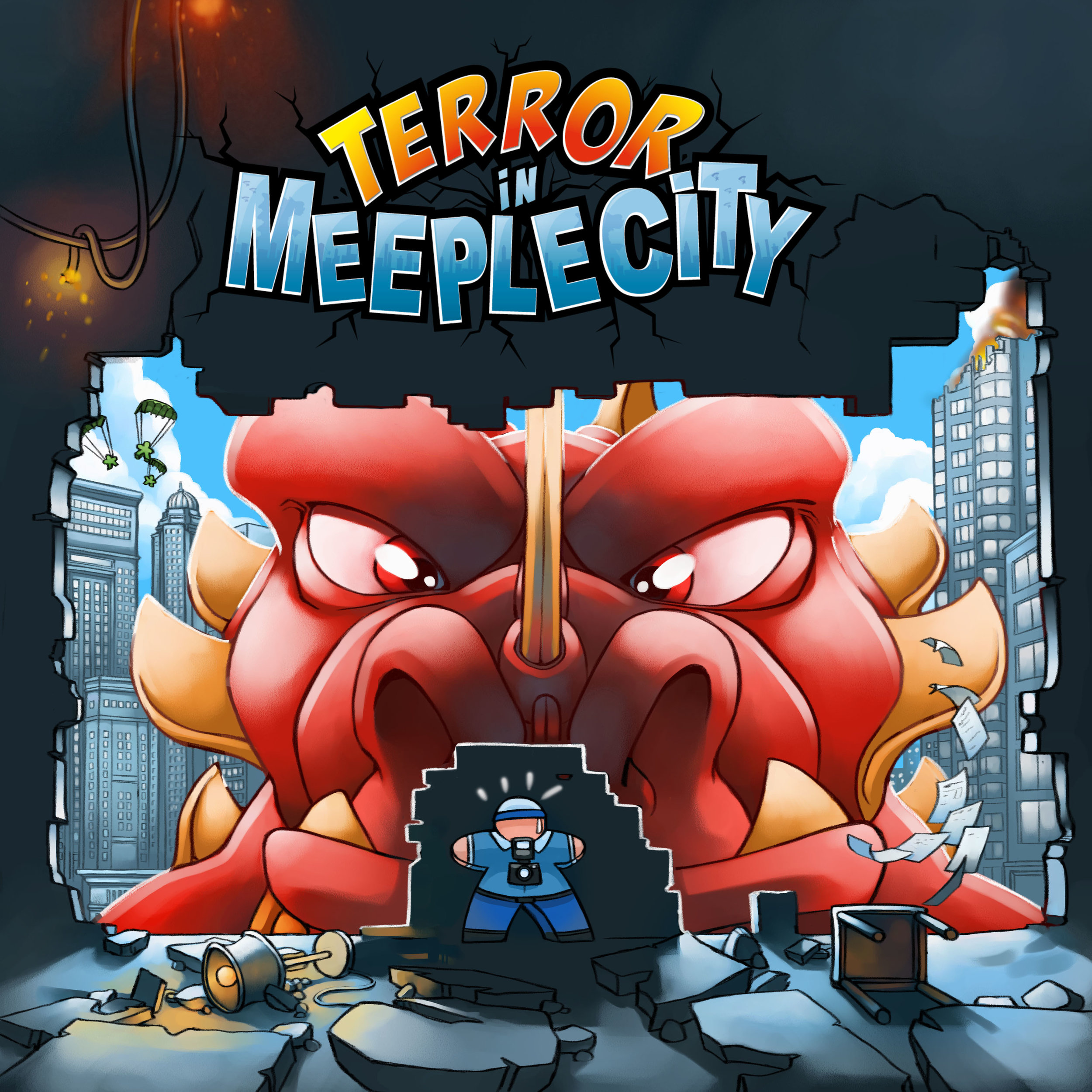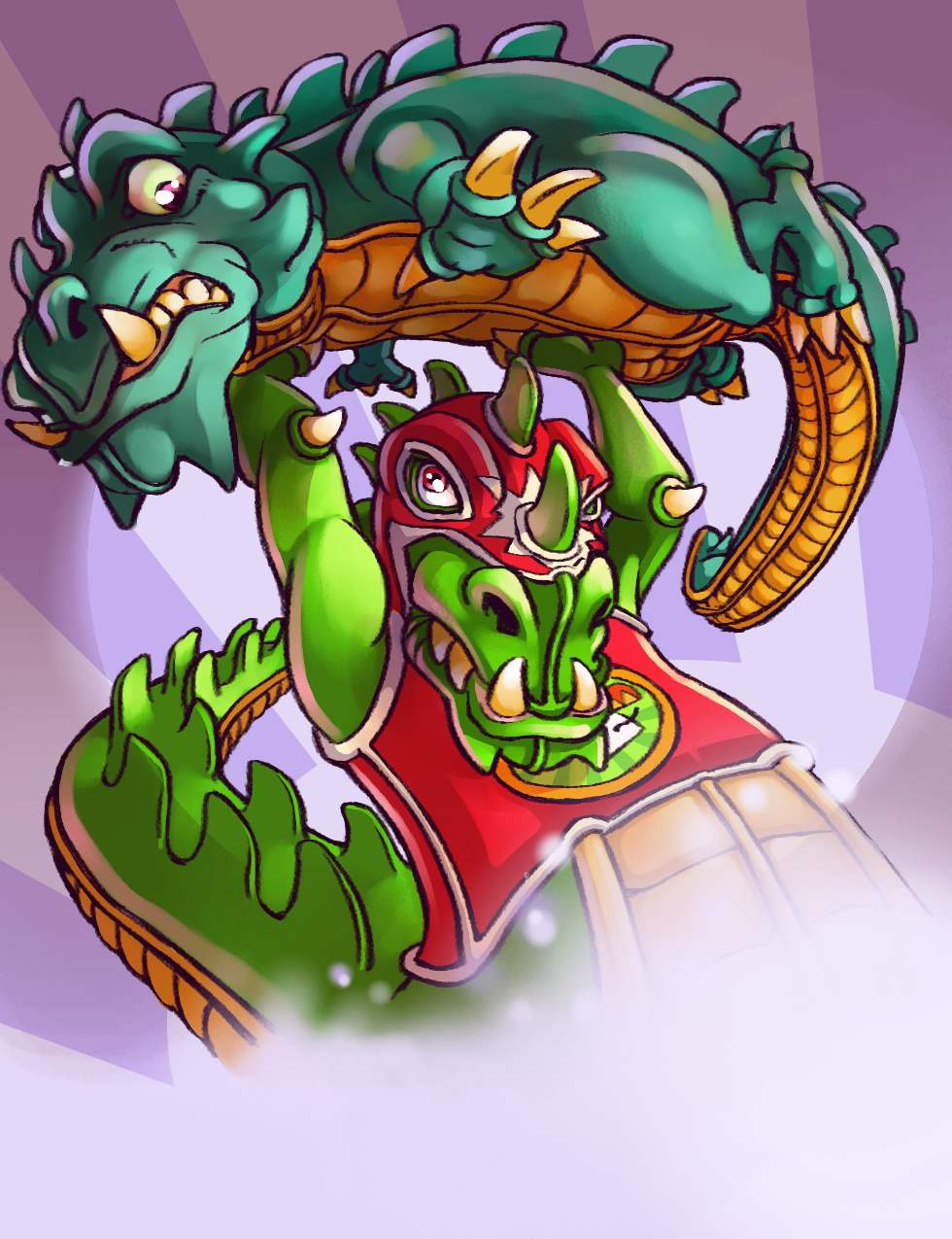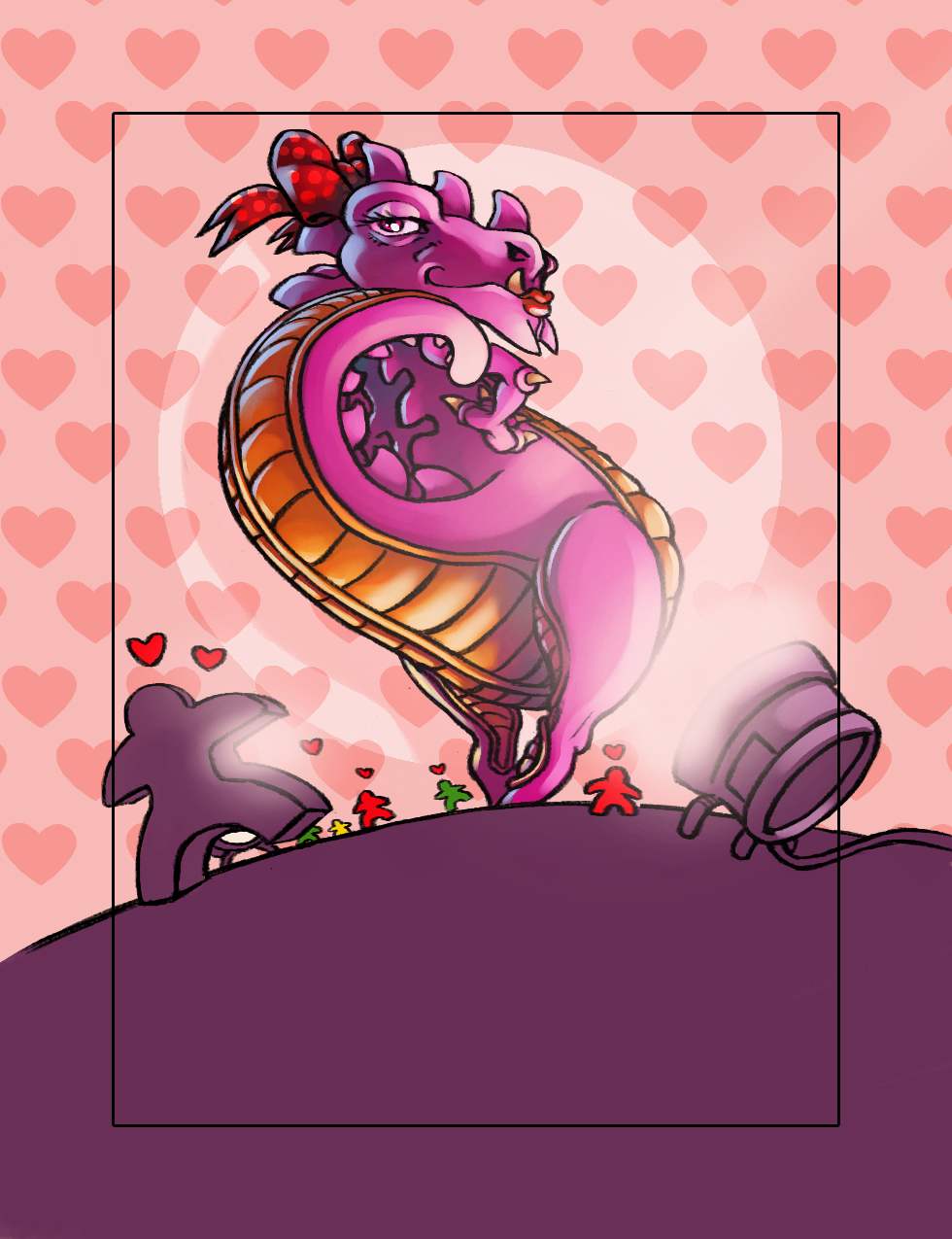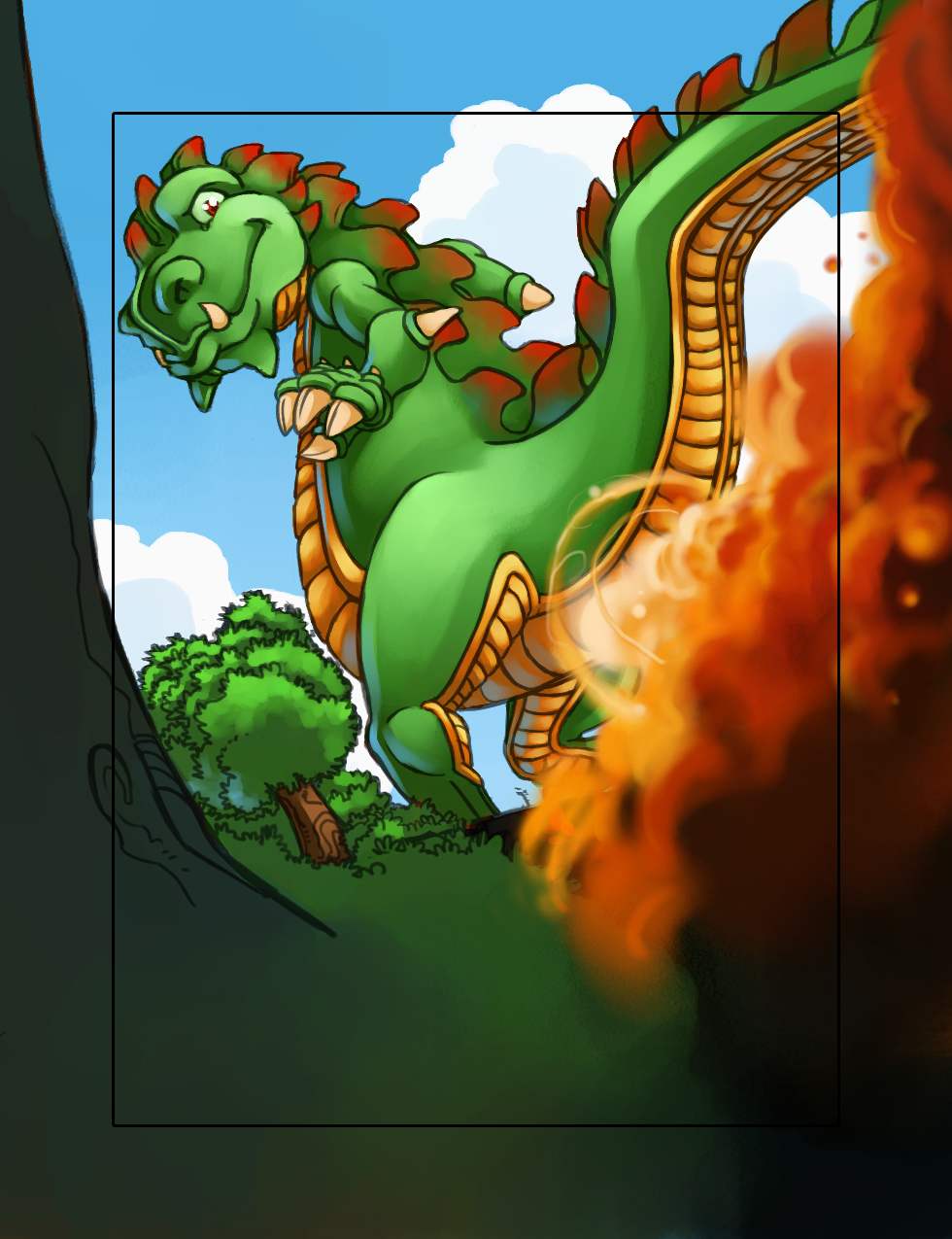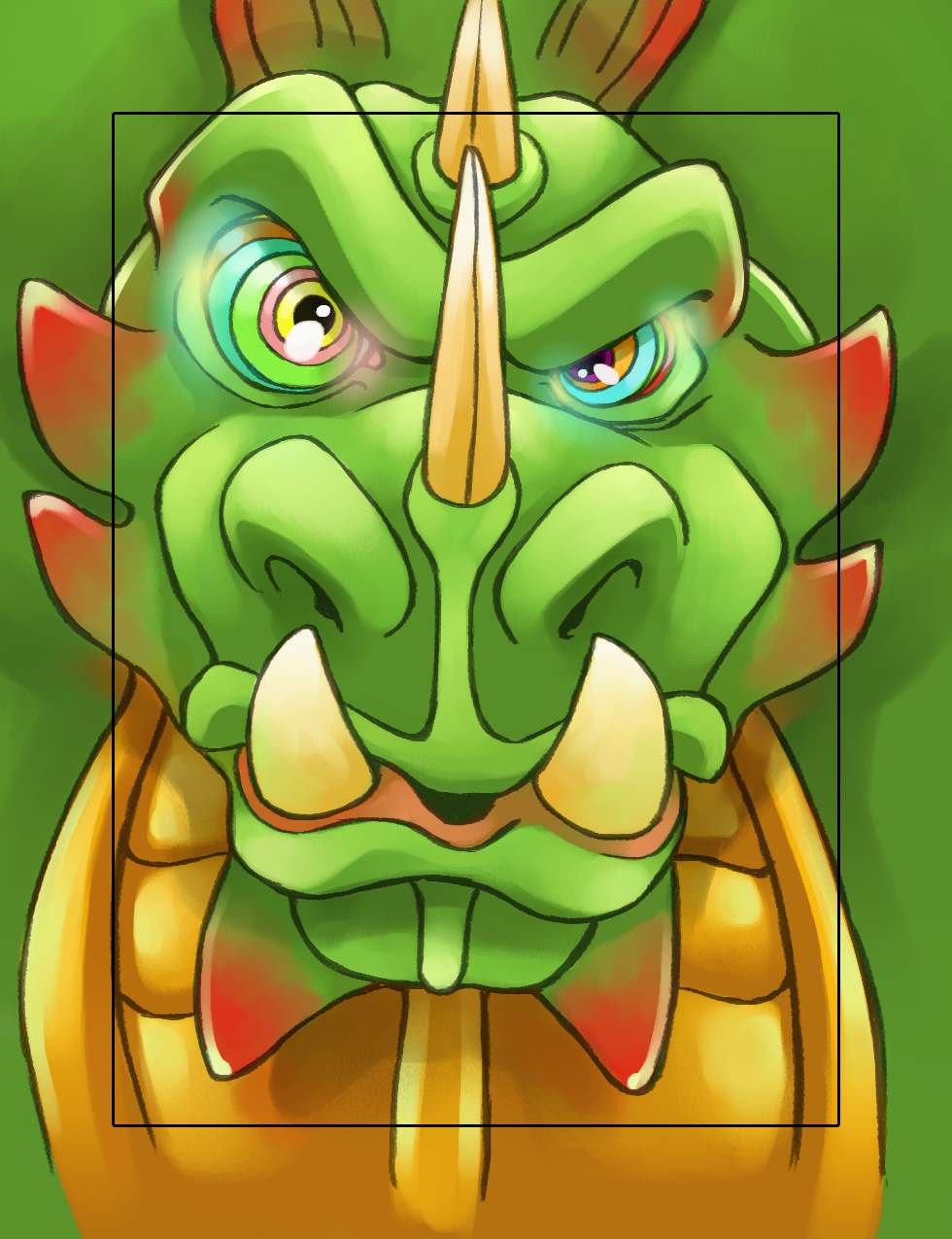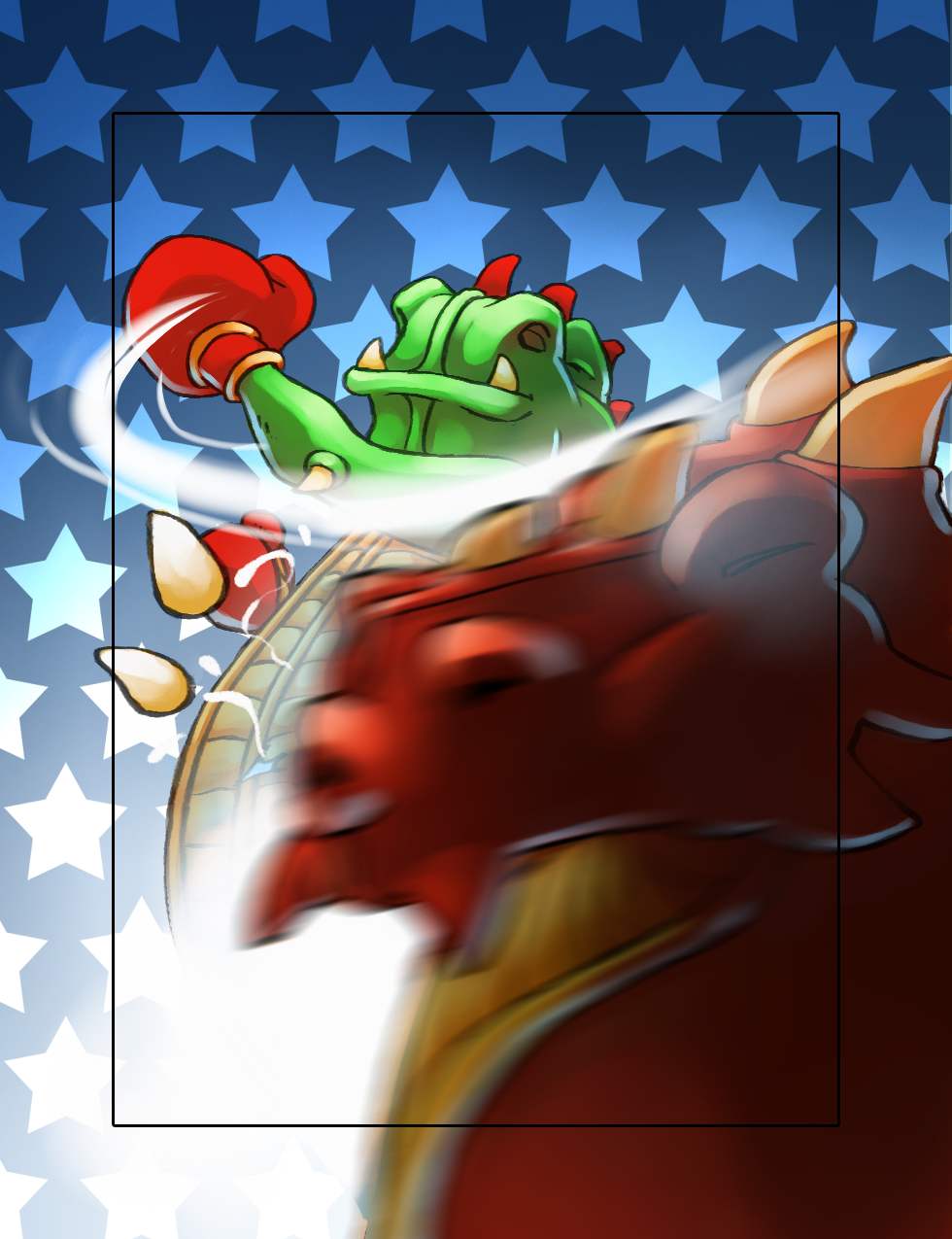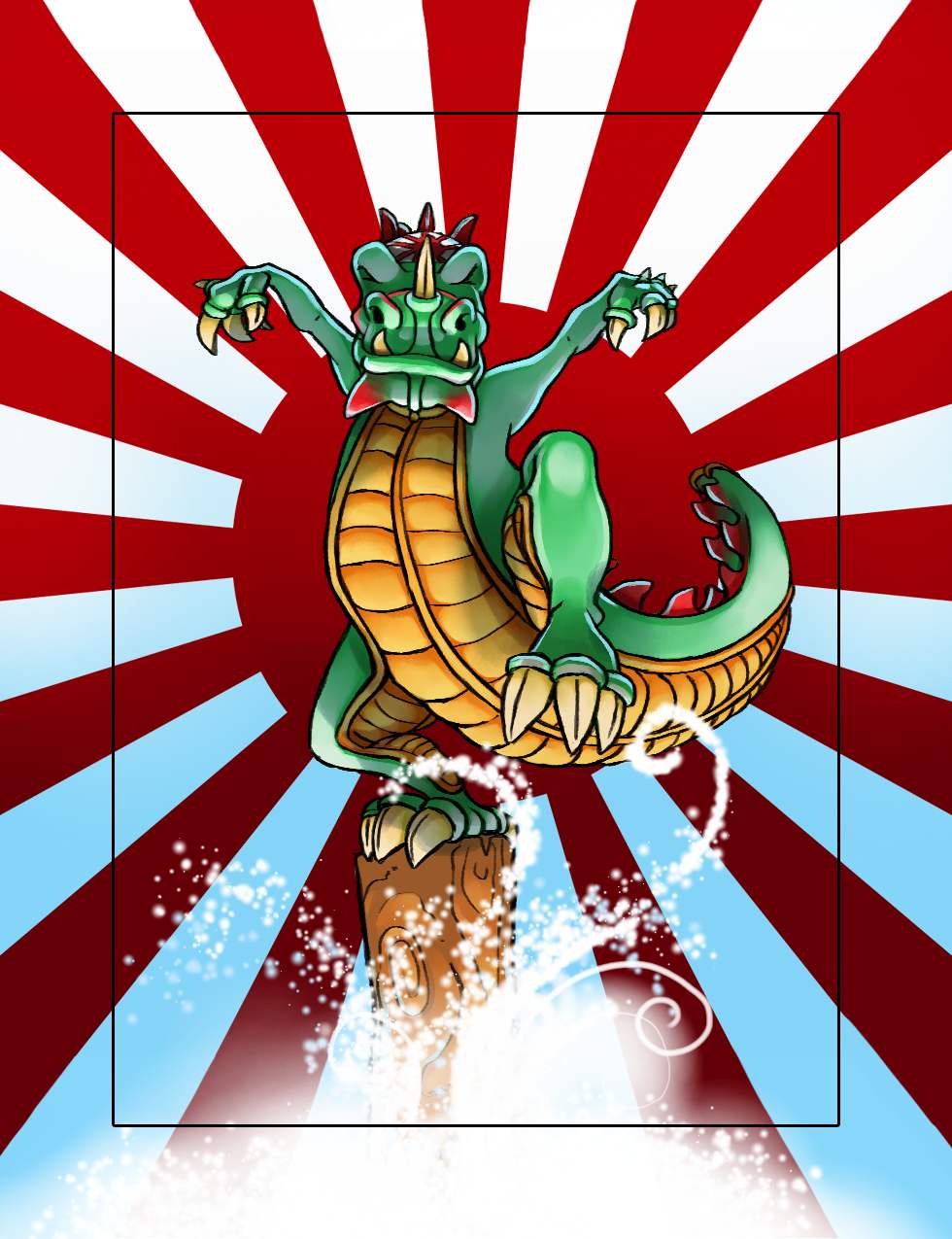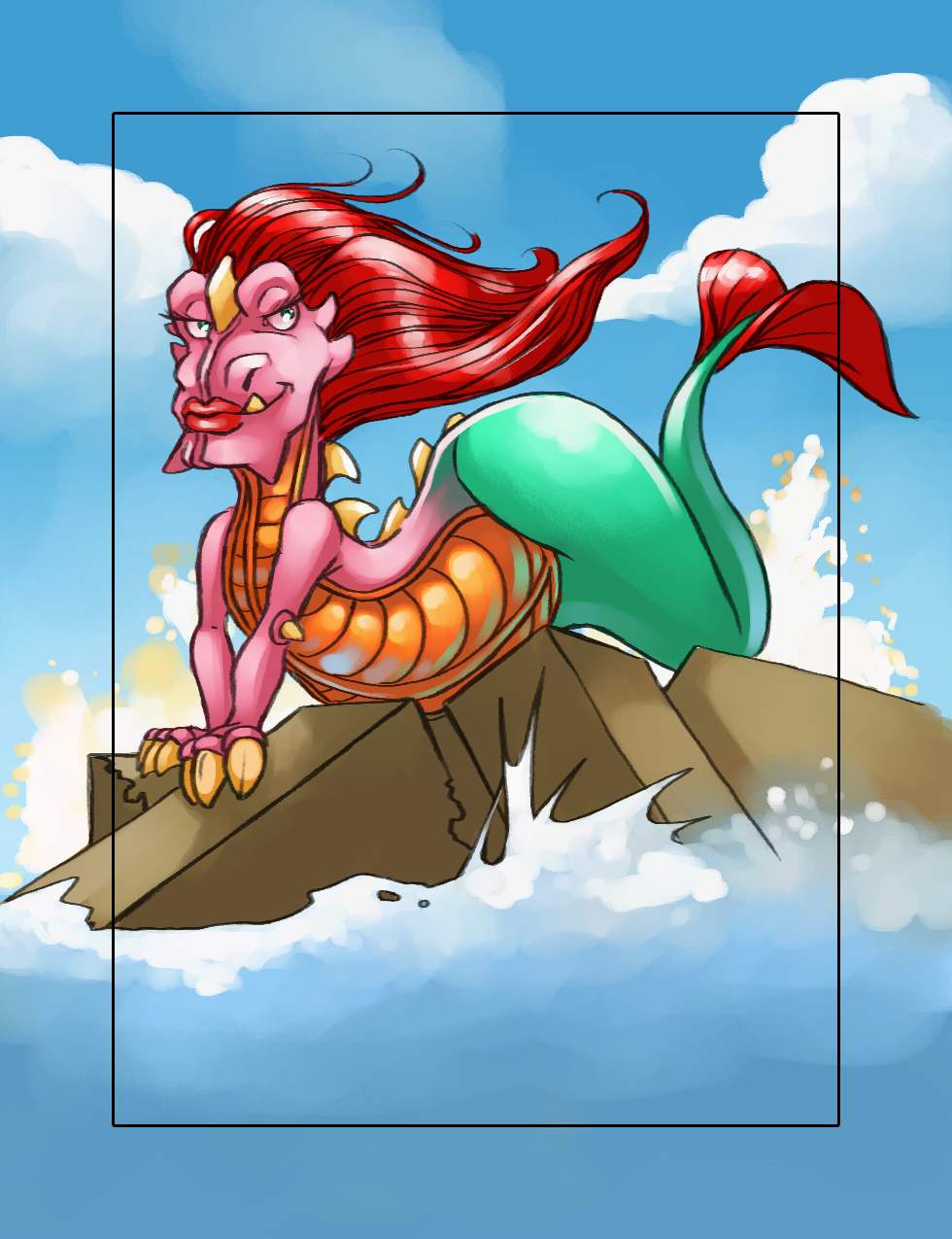Pierô: Art in Board Games #7
Welcome to Issue 7 in my series sharing the stories behind board game art. Ghost Stories was a grail game of mine for a long time, as it was meant to be such a challenging cooperative game. When I looked into the work of its artist Pierre Lechevalier, I wanted to learn more about his work and methods. He’s also worked on games such as Mr Jack, Rampage, and Yggdrasil, as well as with companies such as Repos Production and Matagot.
Be sure to check out the interview archive for more great insights into board game art.
Hello Pierre thanks for taking the time to speak to us. Firstly, could you tell us a little bit about yourself?
Hello, so my name is Pierre Lechevalier but nobody has called me that in a very long time. Now everyone calls me Pierô and I never write my last name when I’m signing a game. If I have to, I’ll put la lune (the moon). Pierô la lune is a character from the italian Commedia dell’arte and in French there is an expression “avoir la tête dans la lune” which roughly translates to “have your head or mind in/on the moon” meaning you’re always dreaming and not very focused on the surrounding world. As a child (and still), it describes me pretty well and everyone calls me Piero because of that. Wow! Just my name alone made a long intro. I will try to keep the rest shorter!
So I’m a french board game illustrator working in the industry since 2006. The first game I illustrated was Mr. Jack which was quite successful and is still available now. I’ve done 40 games since then and the most popular ones are Dice Town, Ghost stories, River Dragon or Rampage aka Terror in Meeple City (depending from which country you’re coming from). Illustrating games is how I’ve made my living for 11 years now and I’m lucky to have had a lot of work meaning I can live from it. Which is great because it’s a damned good job.
Beside my work, I live in the south east of France in a very very small village where I can enjoy the birds singing and the wind in the trees. But don’t imagine me with long hair running naked through the woods with flowers in my beard... I don’t have long hair. More seriously, I lived for more than 30 years (I’m 42) in the city and I grew tired of it, plus as I’m working from home I need the calm and fresh air.
I’m a gamer and a pretty serious one. Videos games, when I have the time and a lot of boardgames. I have more than 500 board games at home and when I go beyond that amount my wife strongly suggests that I give some away to friends and family who can use them. My wife is also a gamer, as is my 8 year old son. When I don’t work or play I’m jumping from planes with my parachute and have been since 2012.
Hmmm, I think you know pretty much everything about me. Oh no! One last thing! I talk a lot. I mean A LOT! As you can see, quick answers are not an option here. Sorry.
Now we know a little more about you, I have to ask, as a child what did you want to be when you grew up?
For as long as I can remember, I wanted to be an illustrator and I’ve been drawing since I could hold a pencil. Drawing has always been a way of expressing myself and if there was something I couldn’t say, I drew it.
Not just that though, if there was a toy I couldn’t have, I would just draw it to play with. Or if I had to give someone a gift? Wow, it’s so much cheaper to draw for them, plus then they’d also have to say it was great too! My mother put me in an art school when I was 8 but perhaps she was just tired of the ugly drawings as gifts.
In France, comics are very different than in the U.S or other countries. They cover a much larger audience spanning children, teens and adults. They are hard backed and normally between 44 and 56 pages. Generally it’s the work of 2 or 3 artists (a writer, illustrator and colors artist) and they take around one year to finish. I wanted to be a comics illustrator until I was about 25 or 26 but I failed because it’s very hard to become one and requires a lot of work and talent. I didn’t have enough or didn’t work hard enough, who knows. Anyway, I always wanted to be an illustrator, a drawing artist and I did it! Which is pretty cool right?
So how did you first get involved in making board games?
I have a cousin who lived with me for a number of years or we always lived very close. I consider him my little brother and we played a lot of board games together when we were young. When I was 15 and he was 13, we discovered a store that sold board games and RPGs and we fell into the trap. We found a lot of different RPGs (Vampyr, Star Wars, Cthulhu and Cyberpunk…) and at the same time discovered American board games with Warhammer 40000, Dungeon Quest (yeah, the 1st version) and Cosmic Encounter as well as the French touch with Full Metal Planet, Sherlock Holmes and many more. We played until I had to leave my hometown for my studies.
I stopped playing board games until 2003-2004 when I dived deep back in after discovering modern games such as those from Days of Wonder or Asmodee. In two months alone I had bought 30 games, just because they were so good and so beautiful! Still drawing in my free time and trying to become a pro, I started to draw me and my board game friends dressed as characters from the games we played. I wanted to start a website about it and I contacted Bruno Cathala to ask him if I could use my version of Shadows Over Camelot on there. I showed him my drawing and had fun with it. However, one week later I received a message from him, giving me his cell phone, asking me to call him to discuss a project. That was Mr. Jack.
That’s how I first became involved in the board game industry, Bruno Cathala! Yep, you’re free to blame him! When Mr. Jack was released, I went to Essen (2006) to see my first box as soon as possible and I got invited by Bruno and Ludo (Ludovic Maublanc, co designer of Mr. Jack and Dice Town) to do little drawings on the lid of the box for gamers. This was the first time in Essen that an illustrator came to do a signing session. Once I sat on my chair to start doodling I never was able to leave it. During those 4 incredible days of drawing gamers really appreciated it and it ended up making a big buzz. That’s how I became a board game illustrator I think. My signing session made me famous and Mr. Jack was a huge success.
When you are working on the art of a board game can you give us a quick overview of your creative or thought process and has this changed at all since you first started?
First step, try the game. I’ve been going to Essen every year since 2006, to the Bruno Faidutti gathering since 2007 and to some smaller conventions in France too. Bruno Faidutti, Bruno Cathala, Ludovic Maublanc, Antoine Bauza, Roberto Fraga, Nicolas Normandon and many others became friends of mine. Real friends. I’m playing a lot of games at the prototype stage and sometimes, if I have a big crush for one of them (Dice Town and Ghost Stories are good examples) I really want to be a part of it. I think you never do a better job than when you’ve tried the game. It helps a lot to understand what’s important in the mechanics of the game and what you have to highlight. A beautiful game is not enough, it has to be a good game too in order to face the many games which will be released in the same year. Of course it helps to have a nice, beautiful game but illustrations are at the service of the game and sometimes, an illustration has to be simplified to help the comprehension of how the game works. That’s why it’s a very important first step for an illustrator to play the game.
When the publisher has finished their work with the game designer (creating the game and developing it) they will have a theme, a list of needs and this is when I start to work for real. I start some rough drafts to find the style I want and make some suggestions to the publisher (sometimes designers are involved too).
I like to change my style so I don’t get bored of my work. Sometimes, I want to make some cartoonish and colorful illustrations (Dice Town, Rampage, River Dragon, Medieval Academy) and others perhaps I want to be more serious in style (Yggdrasil, Ghost Stories). That’s why I’m always trying different styles for each project. Once we have an idea of what we want, I start to work with black and white roughs of the cards, boards and covers. There is no rule about what I do first so it depends. Sometimes the cover will give me the style and direction for the rest. Sometimes it’s the board, as I say there are no rules.
I send a big mailing with lots of roughs and then wait for the green light. Once I have it, I do the final drawings in black and white and send them to the publisher. When I have approval to go ahead further I put in the colors. I generally try to not do all the roughs, black and white final drawings and (at the end) colors at the same time. It’s very complicated to create an illustration from scratch on a white page so I generally try to alternate between differents step throughout the process, although adding the colors is a pretty cool and easy task.
Oh, I didn’t mention, I work 100% on a computer. That’s the only thing which has changed since 2006. The first illustrations of Mr. Jack were drawn on paper with computer colors. Now, from the first rough, everything is digital. I’m working on Corel Painter.
In regards to the art process, some game designers like to be involved and others don’t. For example, Antoine Bauza and Bruno Cathala love to discuss and give their opinions during the creation process. Sometimes designers don’t really care or leave it down to me. Or it might be the publishers who stop me sharing my work with the designers so as to not bring in more opinions thus slowing down the process.
You were involved in the creation of Rampage/Terror in Meeple City, so could you tell us a little bit about what that involved and what were the biggest challenges you faced?
I’m going to talk about Rampage (Terror in Meeple City on the second release) from game designers Antoine Bauza and Ludovic Maublanc (published by Repros Prod) as although it’s clearly not my best work (or even the one I enjoyed most) it explains all the processes I covered in the previous question and was a real challenge.
It started when I played a really early prototype during Essen in 2008. We were here with Antoine for the release of Ghost stories and Ludo (Ludovic Maublanc) was here for Cyclades (or perhaps also Cash and Guns). It was very late, something like 3am and we were drinking, just maybe not the water they had put on the proto table. One hour later, some guys from Repos signed the game and I was there to say “I’m the illustrator of it and you don’t have choice!”. I always have a video camera with me and I filmed a lot of things that night, proving we didn’t just drink water. We started to really work on the game 4 years later, sometimes it takes time to develop a game to its final version.
When I started to work on it, I spent a lot of time to find the style we wanted. It was very complicated because of the style of the game, which was fun and stupid with big monsters. We hesitated between a lot of different styles. After a few weeks of research and a dozen tries we, of course, chose the very first one. It’s always like this.
The cover was the first thing I started and I had done more roughs of proposals than I usually do. It had been a real fight between me and the publishers (friendly, of course) because I had a preference for a cover and they had another. As we are all very stubborn it took us some time to chose and finally we went with their choice. The publisher has the last word of course. The game then also had a second release with another name and another cover. This time the artwork I had prefered. So we both had our cover and we all won. But now, of course, I prefer the first version.
The cards were done very quickly as the cartoon style was fast to do and fun. The cards descriptions given by Antoine and Ludo were very clear so I just had to translate their wishes and follow their direction.
The real challenge was in the game board. I was, at this time, an illustrator for 6 years with at least 15 games to my name. Unfortunately, this doesn’t mean you won’t make a poor estimation of how much work you need to do. We chose a very cartoon-y style, simple and colorful. I’m pretty fast on this kind of work so I imagined it would take me one or two weeks to do the board. It took me 3 months.
The game was released at Essen 2013 and not 2012 partly because of my mistake in time evaluation. The illustration of the board was supposed to be a part of a big town with buildings and sidewalks. A simple top view. I wasn’t supposed to draw 3D buildings with perspective and so I was very optimistic about it. 5 years later, I still ask myself how I could have been THAT stupid. A top view of a cartoon building is basically a square. It’s very empty and so ugly! I had to add details, objects, and more details, more objects... I still wake up screaming “Nooooo! Please…! No more of this board!!”.
This project should have been the best moment in my career. I was working with only friends (game designers and publishers) on a very fun and original game. Everything was supposed to be cool. Unfortunately, I’ve realised since then that it’s always when I think it will be cool and quick that it’s a painful and slow process.
But, to be honest, I learned a lot (even more than I wanted) with this project and it’s still one of my best works according to my son. He’s young… He doesn’t know.
What was the inspiration or core idea that drove your work on Rampage/Terror in Meeple City?
The game was designed to be an homage to a very (very very) old video game called Rampage. We (Antoine and myself) were big fans of the game (I wasted so many coins on this game) which is why we did it. I took inspiration directly from the video games visual design. That’s what the publishers wanted too and we were good at it, unfortunately, perhaps a little too good. They had to change the name of the game and the publishers chose to change the cover as well to be cautious.
What are you currently reading, listening to or looking at to fuel your work?
I’m not reading as much as I would like to. Comics or books. Firstly because I don’t have much free time and secondly, like everyone else, I’m watching a lot of television series. I’m a big fan of old shows like The Wire, Six Feet Under or Firefly. I’m watching a lot of things, Netflix is a good dealer. Actually, I love Sherlock, Viking and Grey’s Anatomy…. Yeah, I know… I’m sorry! What can I say, it’s clearly a guilty pleasure. My wife was watching that show from the beginning and I started to get into it. Bam, I started again from the 1st season. Really? Am I talking about Grey’s anatomy in a professional interview? I clearly have to drop it!
I don’t really fuel my work with movies, tv shows or books. Or not consciously. When I’m drawing, I have podcasts playing in the background (Dice Tower and French ones) or music. If I put on music it’s generally a movie score in the mood of the game I’m working on. For example, when I drew Ghost stories I listened to Miyazaki movie soundtracks (Ghibli films like Mononoke or Totoro) and Memoirs of a Geisha. 3 months, I can’t listen to them anymore!
Of course, I have a lot of friends who are illustrators. Naiade (Tokaido, Seasons) Dijb (Clash of Rage, Titan Race), Miguel Coimbra (7 Wonders, Smallworld), Biboun (Dice forge, Time Bombs), Ani (Jamaica), Jeremy Fleury (Oceanos, Yamataï), Arnaud Demaegd (Ystari games) and many many others. We see each other a lot, we speak a lot and we help each other. We are real friends and not competitors. If I can’t do or don’t want to do a job, I ask them if they’re interested.
What advice would you give to anyone wanting to work in the board game industry?
Don’t! Stay where you are! There’s enough of us already!... please? I don’t really have too much advice because it’s a cool job in a very cool industry, for sure. Two things perhaps. First, play, play and play again. It’s a wonderful sensation to see our illustrations being played by perfect strangers but it has to be played first. Don’t hesitate to forget a little about your ego and highlight the game mechanics. Secondly, and much more importantly... wait let’s make this a new paragraph as it’s so important.
Here we are. So, secondly: It’s a job!! IT’S A JOB!! You’re a gamer? You’re an illustrator? Cool, welcome, but make sure you’re paid! It’s very easy to meet passionate people in this industry but it doesn’t mean that passion will fill your fridge or pay your rent. Don’t underestimate your work and its importance. Don’t listen to people who say “Hey! It’s cool for your artbook” or “I don’t have the budget but you will be famous after that!”. If you don’t have the budget for the illustrations of your game, don’t publish it! Actually, there are more than 1000 board games released every year. You just have to put some budget into the components and the illustrations.
Do you have any current projects underway, or coming up that you’d like (or are able) to tell us about?
Yep, I do. Would I like to talk about it? Oh Yeahh! Can I...? Nope! I can tell you a new expansion for Dice Town will be released soon with a new design of the base game. I’m also working with Matagot on some projects and I’m illustrating a game for two players with a very cool theme.
Finally, if we’d like to see more of you and your work, where can we find you?
You can find me on Facebook under the name of ‘Pierô la lune’ @Pieroillustrateur. It’s a page, not a personal FB. My personal is Pierô Lalune but I don’t accept friend requests anymore on my personal account. It’s just too complicated to manage private and professional lives at the same time.
I don’t post everything both in English and French. Mainly because I don’t have a lot of followers in English but I could do if I have to. You’ll see my last illustrations, some live videos so don’t hesitate to come and comment!
(All images supplied by Pierre Lechevalier)





